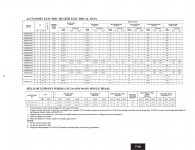PedroS
Member
- Location
- Boca Raton, FL
- Occupation
- Electrical Engineer
We have received a comment from the building department in Florida on the load calculation for the apartment units in a new apartment building. We are using Part IV of NEC 220: Optional Feeder and Service Load Calculation.
The building department official is asserting that the supplemental electric heating in a split AC system is a continues load under 2017 NEC 220.82(C)(6) and should be taken at 100% instead of 65% per 2017 NEC 220.82(C)(4). They are using the Article 424.3(B) in the 2017 NEC to define the supplemental heat in the AHU as fixed space heating despite section 424.1 stating that Article 424 does not apply to air conditioning. The argument for ignoring section 424.1 being that when in heating mode, the AHU in the AC system would be central heating, not air conditioning, thus 424.3(B) would apply and treating the heating in the split system as fixed space heating.
The heating in the AHU dose not have it's own breaker, it is part of the AHU and thermostatically controlled. Using the building official's logic, I don't see where NEC 220.82(C)(4) or NEC 220.82(C)(5) would ever apply.
Are we interpreting NEC 220.82 correctly? Is the supplemental heat that is part of the AHU in a split AC system to be treated as a continuous load and if, when in “heating mode”, the AHU in one apartment in an apartment building is defined as central heating? Or is it part of the air conditioning and thus falls outside the scope of 424?
The building department official is asserting that the supplemental electric heating in a split AC system is a continues load under 2017 NEC 220.82(C)(6) and should be taken at 100% instead of 65% per 2017 NEC 220.82(C)(4). They are using the Article 424.3(B) in the 2017 NEC to define the supplemental heat in the AHU as fixed space heating despite section 424.1 stating that Article 424 does not apply to air conditioning. The argument for ignoring section 424.1 being that when in heating mode, the AHU in the AC system would be central heating, not air conditioning, thus 424.3(B) would apply and treating the heating in the split system as fixed space heating.
The heating in the AHU dose not have it's own breaker, it is part of the AHU and thermostatically controlled. Using the building official's logic, I don't see where NEC 220.82(C)(4) or NEC 220.82(C)(5) would ever apply.
Are we interpreting NEC 220.82 correctly? Is the supplemental heat that is part of the AHU in a split AC system to be treated as a continuous load and if, when in “heating mode”, the AHU in one apartment in an apartment building is defined as central heating? Or is it part of the air conditioning and thus falls outside the scope of 424?



